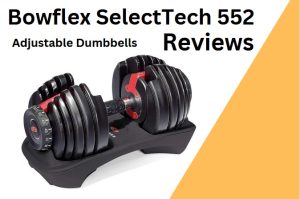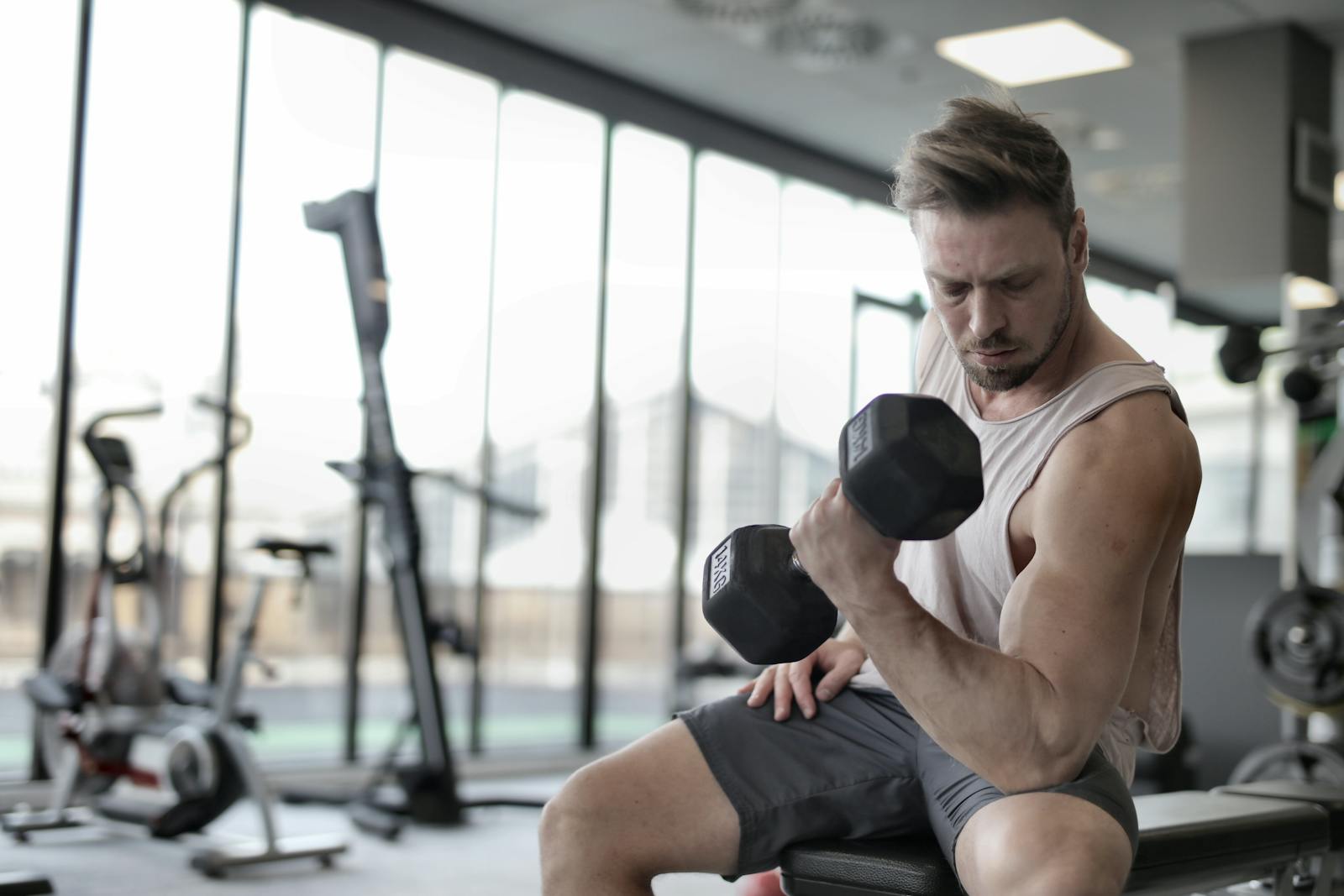
When it comes to achieving fitness goals, having a home gym can be an excellent way to stay on track. However, choosing the right exercise equipment can be overwhelming, especially for beginners. With so many options available, it’s challenging to know where to start. In this article, we will provide you with some useful tips on how to choose the right exercise equipment for your fitness goals.
1. Define Your Fitness Goals
The foundation of any successful fitness journey starts with clearly defining your fitness goals. What do you want to achieve with your home gym? Are you looking to lose weight, build muscle, improve your overall fitness level, enhance flexibility, or train for a specific event? Taking the time to identify your goals is crucial as it will not only guide your equipment choices but also serve as a source of motivation throughout your fitness journey.
1.1 Weight Loss and Fat Burning
If weight loss and fat burning are at the top of your priority list, focusing on cardiovascular exercise equipment will be essential. Options such as treadmills, ellipticals, stationary bikes, and rowing machines are excellent choices for burning calories and shedding unwanted pounds. These machines offer various intensity levels, allowing you to customize your workouts and track your progress. Additionally, consider incorporating resistance training with equipment like dumbbells and resistance bands to boost your metabolism and preserve lean muscle mass while burning fat.
1.2 Muscle Building and Strength Training
For those aiming to build muscle and increase overall strength, resistance training equipment will be your primary focus. Weightlifting equipment, such as barbells, dumbbells, kettlebells, and weight machines, are indispensable for targeting specific muscle groups and promoting muscle growth. Compound exercises like squats, deadlifts, bench presses, and shoulder presses can be performed using these tools, enabling you to build a well-rounded physique. Don’t forget to include a power rack or squat rack for added safety during heavy lifts.
1.3 Cardiovascular Endurance
Improving cardiovascular endurance involves elevating your heart rate and sustaining it over a prolonged period. Equipment like treadmills, stationary bikes, and rowing machines are ideal for cardiovascular workouts. Consider incorporating interval training into your routine, alternating between periods of high-intensity effort and active recovery. This approach can enhance your cardiovascular fitness, increase your aerobic capacity, and boost overall endurance.
1.4 Flexibility and Mobility
Enhancing flexibility and mobility is often overlooked but is equally crucial for overall fitness and injury prevention. Equipment like yoga mats, foam rollers, and resistance bands can help improve flexibility, balance, and joint mobility. Adding yoga or stretching sessions to your routine can reduce muscle tension, improve posture, and enhance your range of motion, leading to better performance during other workouts.
1.5 Functional Training and Core Strength
If functional training and core strength are your priorities, consider equipment that engages your entire body and emphasizes stability. Items like stability balls, medicine balls, and suspension trainers are excellent for functional movements that mimic real-life activities. These exercises not only strengthen your core but also improve overall body coordination and balance, making daily activities more manageable and reducing the risk of injuries.
1.6 Stress Relief and Mindfulness
Beyond physical fitness, your home gym can also serve as a space for mental well-being and stress relief. Consider creating a designated area for meditation and relaxation, complete with comfortable seating, calming decorations, and perhaps even a small water feature. Practicing mindfulness and meditation can reduce stress levels, improve focus, and positively impact your overall mental health.
1.7 Training for Specific Events
If you have specific events or competitions in mind, tailor your equipment choices to your training needs. For instance, if you’re preparing for a marathon, investing in a high-quality treadmill and a foam roller for recovery could be beneficial. If you’re training for a strength-lifting competition, prioritize weightlifting equipment like barbells, bumper plates, and a sturdy power rack.
2. Consider Your Available Space
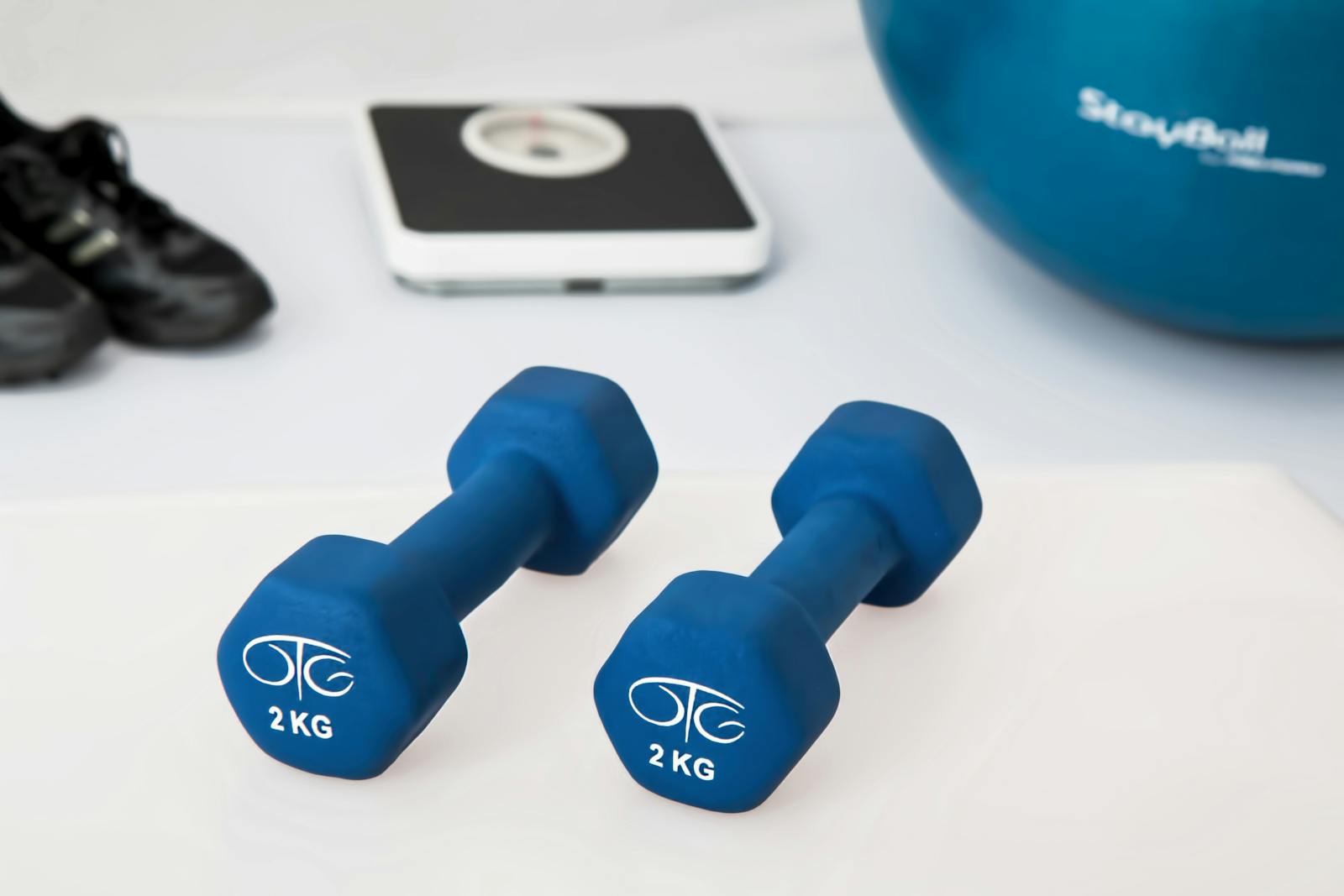
Creating a home gym that fits perfectly into your living space is essential for a comfortable and effective workout environment. Before diving into purchasing exercise equipment, take a close look at the available space in your home. The size and layout of your gym area will play a significant role in determining the type of equipment you can accommodate and the overall functionality of your fitness space.
2.1 Assess Your Gym Area
Start by identifying the area in your home where you plan to set up your home gym. This could be a spare bedroom, a basement, a garage, or even a dedicated corner in your living room. Measure the dimensions of the space and consider any obstacles or features that might affect the layout, such as windows, doors, or support columns.
2.2 Utilize Vertical Space
If you have limited floor space but ample vertical space, consider utilizing walls to maximize your gym area. Wall-mounted equipment not only saves floor space but also adds a professional and organized look to your home gym. Install wall brackets to hang items like resistance bands, suspension trainers, and yoga mats. You can also mount shelves or hooks to store smaller accessories like foam rollers, kettlebells, and medicine balls.
2.3 Folding and Compact Equipment
For those with limited space, investing in folding and compact exercise equipment can be a game-changer. Many cardio machines, such as folding treadmills and compact ellipticals, are designed to be easily folded and stored when not in use. This feature allows you to reclaim your floor space and convert your gym area back into a multifunctional living space when needed. Additionally, consider collapsible or adjustable benches for strength training exercises, which can be tucked away after each workout.
2.4 Multi-Functional and Space-Saving Designs
To make the most of your home gym area, opt for multi-functional equipment that serves multiple purposes. For example, a combination power rack and weightlifting bench can be used for squats, bench presses, pull-ups, and other exercises, effectively saving space and providing a comprehensive strength training solution. Similarly, adjustable dumbbells, which can replace multiple sets of traditional dumbbells, are an excellent space-saving investment.
2.5 Portable and Storable Equipment
If you have limited permanent space, consider incorporating portable and storable exercise equipment into your fitness routine. Resistance bands, jump ropes, and yoga mats are lightweight and can be easily stored in a closet or under a bed when not in use. These items are versatile and can deliver effective workouts without occupying permanent floor space.
2.6 Room Layout and Flow
When arranging your home gym, take into account the flow of movement and accessibility to different pieces of equipment. Ensure that there is enough space around each machine or exercise area to perform exercises comfortably and safely. Keep the equipment organized and avoid overcrowding, as a cluttered gym can be both demotivating and potentially hazardous during workouts.
2.7 Outdoor Options
If indoor space is a significant constraint, consider exploring outdoor workout options. If you have a patio, balcony, or backyard, you can create an outdoor gym area for exercises like bodyweight training, yoga, or kettlebell workouts. The fresh air and natural surroundings can add an extra boost of motivation to your workouts.
3. Invest in Quality Equipment
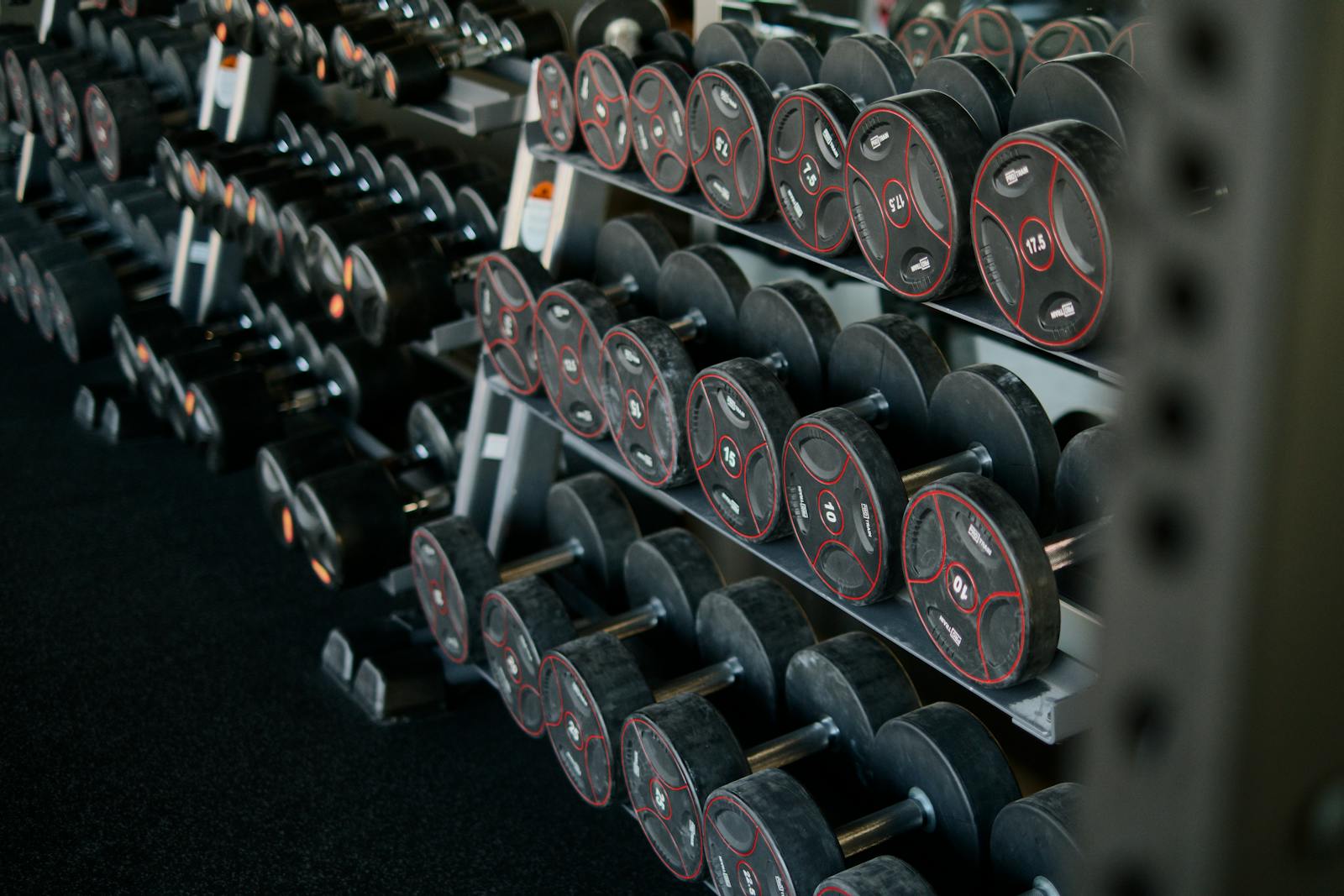
When it comes to setting up your home gym, investing in high-quality exercise equipment is paramount to ensuring safe, effective, and long-lasting workouts. While it may be tempting to opt for cheaper alternatives, quality equipment offers numerous benefits that will make your fitness journey more enjoyable and rewarding. Here are compelling reasons why investing in top-notch fitness gear is worth every penny:
3.1 Safety and Durability
High-quality exercise equipment is built with premium materials and superior craftsmanship, which translates into increased safety and durability. Safety should always be a top priority in any workout routine, and investing in reputable brands ensures that the equipment is designed to withstand the demands of rigorous exercises, reducing the risk of accidents or malfunctions during workouts. Durable equipment not only provides peace of mind but also saves you money in the long run, as you won’t need to replace it as frequently as lower-quality alternatives.
3.2 Enhanced Performance
Quality exercise equipment is designed to optimize performance and deliver optimal results. Whether it’s a treadmill with advanced shock absorption for a comfortable run, a rowing machine with smooth resistance for effective full-body workouts, or adjustable dumbbells for seamless weight transitions during strength training, the performance-enhancing features of high-quality gear can take your fitness routine to the next level. These performance benefits can lead to more efficient workouts, quicker progress toward your fitness goals, and improved overall exercise experiences.
3.3 Ergonomic Design and Comfort
Top-tier exercise equipment often comes with ergonomic design features that prioritize user comfort and convenience. Ergonomics in fitness equipment help reduce strain on joints and muscles, ensuring a more enjoyable workout experience with less risk of injuries or discomfort. For instance, well-padded seats and backrests on stationary bikes and rowing machines support proper posture during extended sessions, while contoured handles on dumbbells and weight machines improve grip and reduce hand fatigue.
3.4 Versatility and Adaptability
Quality exercise equipment often offers a higher degree of versatility and adaptability, allowing you to target various muscle groups and modify your workouts as your fitness level progresses. Many multi-functional machines and adjustable weight sets enable a wide range of exercises, accommodating both beginners and advanced users. This versatility not only saves space but also adds value to your investment, making quality equipment a sound choice for long-term use.
3.5 Improved User Experience
A home gym equipped with high-quality gear provides a more enjoyable user experience overall. Smooth and fluid movements, quiet operation, and easy-to-use features contribute to a positive workout environment. An enjoyable experience can increase motivation, making you more likely to stick to your fitness routine and stay committed to your goals.
3.6 Warranty and Customer Support
Reputable fitness equipment manufacturers often offer extended warranties and excellent customer support. These warranties provide added assurance that your investment is protected against defects and malfunctions, giving you peace of mind while you focus on achieving your fitness goals. Reliable customer support ensures that any issues or inquiries you may have regarding the equipment are addressed promptly and professionally.
3.7 Resale Value
Investing in quality equipment not only benefits you during its lifetime of use but also holds its value well if you decide to upgrade or sell it in the future. Should you decide to change your fitness goals or prefer different types of exercise, high-quality equipment tends to retain its value better than cheaper alternatives when reselling or trading in.
4. Choose Equipment That You Enjoy
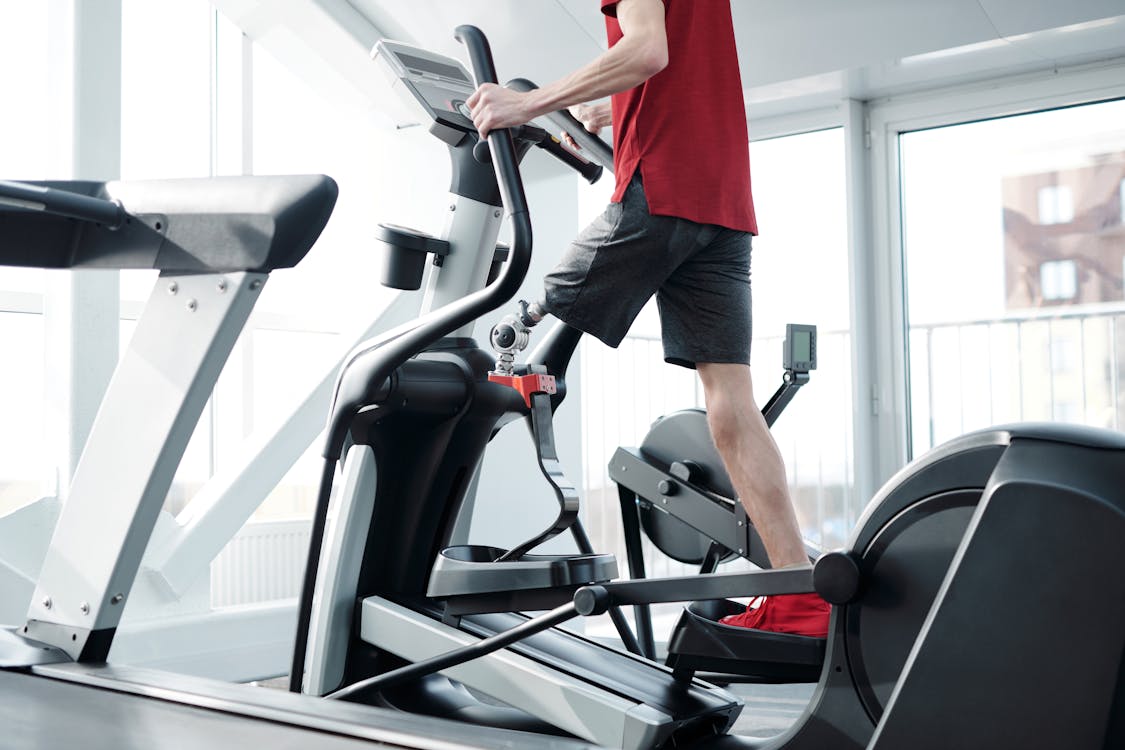
One of the key factors for maintaining a consistent workout routine and achieving long-term success with your fitness goals is choosing exercise equipment that you genuinely enjoy using. The more you enjoy your workouts, the more motivated and committed you will be to show up and put in the effort. Consider the following aspects when selecting equipment that suits your preferences and interests:
4.1 Identify Your Workout Preferences
Before making any equipment decisions, take some time to reflect on the types of workouts and exercises that you enjoy the most. Do you prefer cardiovascular activities like running, cycling, or rowing, or do you find strength training with weights and resistance more appealing? Are you drawn to more low-impact activities like yoga or Pilates? Identifying your workout preferences will help guide you toward the equipment that aligns with your interests.
4.2 Variety and Versatility
While selecting equipment that matches your preferences is essential, it’s also beneficial to include a mix of exercises and activities to keep your workouts interesting and challenging. Look for versatile equipment that allows you to perform a wide range of exercises targeting different muscle groups and fitness components. For example, resistance bands can be used for strength training, stretching, and mobility exercises, offering a well-rounded workout experience.
4.3 Incorporate Interactive Technology
Advancements in fitness technology have introduced interactive features and virtual training experiences that can make your workouts more engaging and enjoyable. Consider equipment that offers built-in displays, interactive coaching, or virtual workouts to add an element of excitement to your home gym routine. Many stationary bikes and treadmills now come with virtual courses that simulate real-world terrain, providing a dynamic and immersive workout experience.
4.4 Add Fun and Playful Equipment
If you’re looking to add an element of fun to your workouts, consider incorporating playful equipment that challenges your body while providing enjoyment. Options like mini trampolines, hula hoops, and agility ladder sets can turn your gym space into a lively and energetic area. Such equipment not only adds variety to your workouts but also brings out the inner child in you, making exercise feel like less of a chore.
4.5 Mind-Body Connection
For those interested in incorporating mindfulness and relaxation into their fitness routine, equipment that fosters a mind-body connection can be highly beneficial. Items like yoga mats, meditation cushions, and foam rollers are perfect for practicing yoga, Pilates, or deep stretching exercises. The calming ambiance created by these activities can help reduce stress, enhance focus, and promote overall well-being.
4.6 Experiment and Try New Things
Don’t be afraid to experiment and try new equipment and workouts. Sometimes, stepping out of your comfort zone and trying something different can lead to exciting discoveries and newfound passions. Attend fitness classes or workshops, even virtually, to explore different exercise modalities and find what resonates with you the most.
4.7 Consider Home Gym Family Members
If other family members will be using your home gym, take their preferences into account as well. Consider equipment that accommodates various fitness levels and interests, ensuring that everyone can enjoy the space and achieve their individual fitness goals.
5. Get Professional Advice

Setting up a home gym and choosing the right exercise equipment can be an exciting but daunting task. If you’re unsure about which equipment suits your fitness goals, physical abilities, and budget, seeking professional advice can be immensely beneficial. Consulting with fitness experts, personal trainers, or equipment specialists can provide valuable insights, guidance, and personalized recommendations. Here are compelling reasons why getting professional advice is a smart move in creating your ideal home gym:
5.1 Personalized Fitness Assessment
A professional fitness assessment can help identify your current fitness level, strengths, weaknesses, and areas that need improvement. During the assessment, a certified personal trainer or fitness expert will take into account your age, health history, exercise preferences, and specific fitness goals. This information will serve as the foundation for designing a tailored workout plan and recommending equipment that suits your unique needs.
5.2 Goal-Oriented Equipment Selection
With the assistance of a fitness professional, you can ensure that the exercise equipment you choose aligns precisely with your fitness objectives. They will guide you in selecting equipment that targets the muscle groups you wish to work on, supports the type of workouts you enjoy, and facilitates progress toward your fitness milestones. This goal-oriented approach will maximize the effectiveness of your workouts and enhance your overall fitness experience.
5.3 Proper Form and Technique
Using exercise equipment correctly with proper form and technique is crucial for preventing injuries and achieving optimal results. A personal trainer or fitness expert can demonstrate the right way to use each piece of equipment, ensuring that you perform exercises safely and effectively. Learning the correct form will not only protect you from potential injuries but also enhance the efficiency of your workouts.
5.4 Equipment Maintenance and Safety
Fitness professionals can provide valuable tips on how to maintain your exercise equipment properly. They will share guidelines for regular maintenance, cleaning, and inspection to ensure that your equipment remains in top working condition. Additionally, they can advise you on safety precautions and best practices for using the equipment safely to minimize the risk of accidents or mishaps during workouts.
5.5 Try Before You Buy
Before making a significant investment in exercise equipment, many fitness centers and specialty stores allow you to try out the equipment. Taking advantage of this opportunity enables you to get a feel for different machines, assess their comfort and functionality, and determine if they suit your workout style. Professional advice during these trials can help you make more informed decisions and avoid purchasing equipment that might not be the best fit for your needs.
5.6 Budget-Friendly Solutions
A fitness expert can guide you in finding cost-effective solutions that fit your budget while still meeting your fitness requirements. They can recommend versatile equipment that serves multiple purposes or suggest alternatives that offer similar benefits without breaking the bank. With their expertise, you can optimize your spending and ensure that your home gym setup remains affordable and sustainable.
5.7 Long-Term Support and Motivation
Building a home gym is not just a one-time project; it’s a commitment to your fitness journey. A personal trainer or fitness expert can offer ongoing support and motivation throughout your fitness journey. They can help you set achievable goals, monitor your progress, and adjust your workout routine as needed to keep you challenged and engaged. Having a support system in place can be a game-changer for staying on track and reaching your fitness goals.
6. Mix It Up
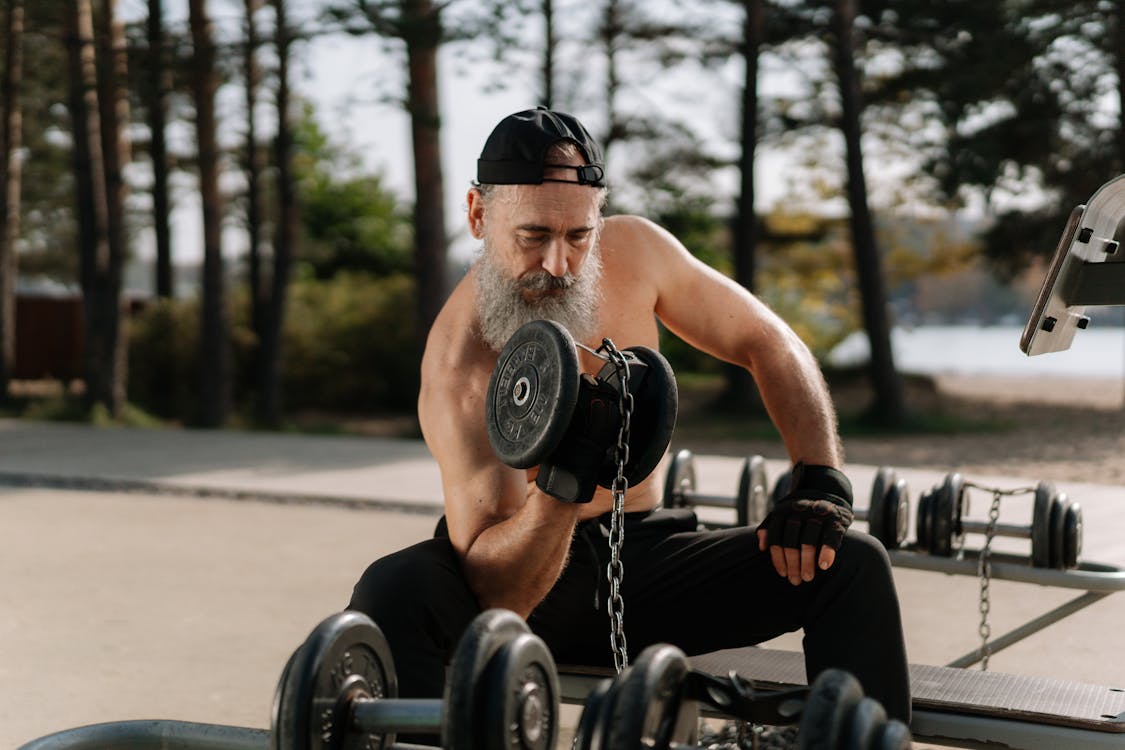
Variety is the spice of life, and it certainly holds true for your home gym workouts. Incorporating diversity into your exercise routine not only keeps things exciting and engaging but also delivers a host of fitness benefits. Mixing up your workouts with different exercises, equipment, and training modalities can help you overcome plateaus, prevent workout boredom, and achieve well-rounded fitness results. Here are several compelling reasons why adding variety to your home gym routine is essential for a successful fitness journey:
6.1 Overcome Plateaus
Performing the same exercises repeatedly can lead to fitness plateaus, where your progress levels off and you find it challenging to see further improvements. By mixing up your workouts, you challenge your body in new ways, stimulating different muscle groups and energy systems. This variation prevents your body from adapting too quickly to your routine, helping you break through plateaus and achieve continuous progress toward your fitness goals.
6.2 Target Different Muscle Groups
Each exercise and piece of equipment in your home gym targets specific muscle groups. By diversifying your exercises, you can work various muscles and ensure that you achieve balanced strength and muscular development throughout your body. For example, while a treadmill primarily targets your lower body, a rowing machine engages your upper body, core, and legs, providing a more comprehensive workout experience.
6.3 Engage Different Energy Systems
Different workouts activate different energy systems in your body. Cardiovascular exercises predominantly utilize aerobic energy systems, whereas high-intensity interval training (HIIT) and strength training tap into anaerobic energy systems. Incorporating both aerobic and anaerobic exercises into your routine improves your overall fitness and endurance levels, allowing you to perform better in various physical activities.
6.4 Prevent Workout Boredom
Sticking to the same workout routine can become monotonous and uninspiring over time. Workout boredom can lead to decreased motivation and adherence to your fitness regimen. By introducing variety, you keep your workouts fresh and enjoyable, making you more likely to look forward to each session. Consider alternating between different forms of cardio, strength training, flexibility exercises, and even outdoor workouts to keep things interesting.
6.5 Injury Prevention
Repeating the same exercises without variation may lead to overuse injuries as specific muscles and joints become strained. By mixing up your workouts, you give certain muscle groups a chance to recover while engaging others. This approach reduces the risk of overuse injuries and helps maintain your overall physical health.
6.6 Mental Stimulation
Exercising with different activities and equipment keeps your mind engaged and active during workouts. It’s like solving a puzzle – constantly adapting to new exercises challenges your coordination and cognitive skills, promoting mental acuity and focus. The mental stimulation derived from varied workouts can also alleviate stress and enhance your overall well-being.
6.7 Enjoyment and Long-Term Commitment
Ultimately, incorporating variety into your home gym routine contributes to the enjoyment and long-term commitment to your fitness journey. When you enjoy your workouts, you’re more likely to stick to your exercise plan, leading to consistent progress and sustainable results. The excitement of trying new exercises and exploring different equipment will make your fitness journey an adventure you eagerly look forward to each day.
7. Set a Budget
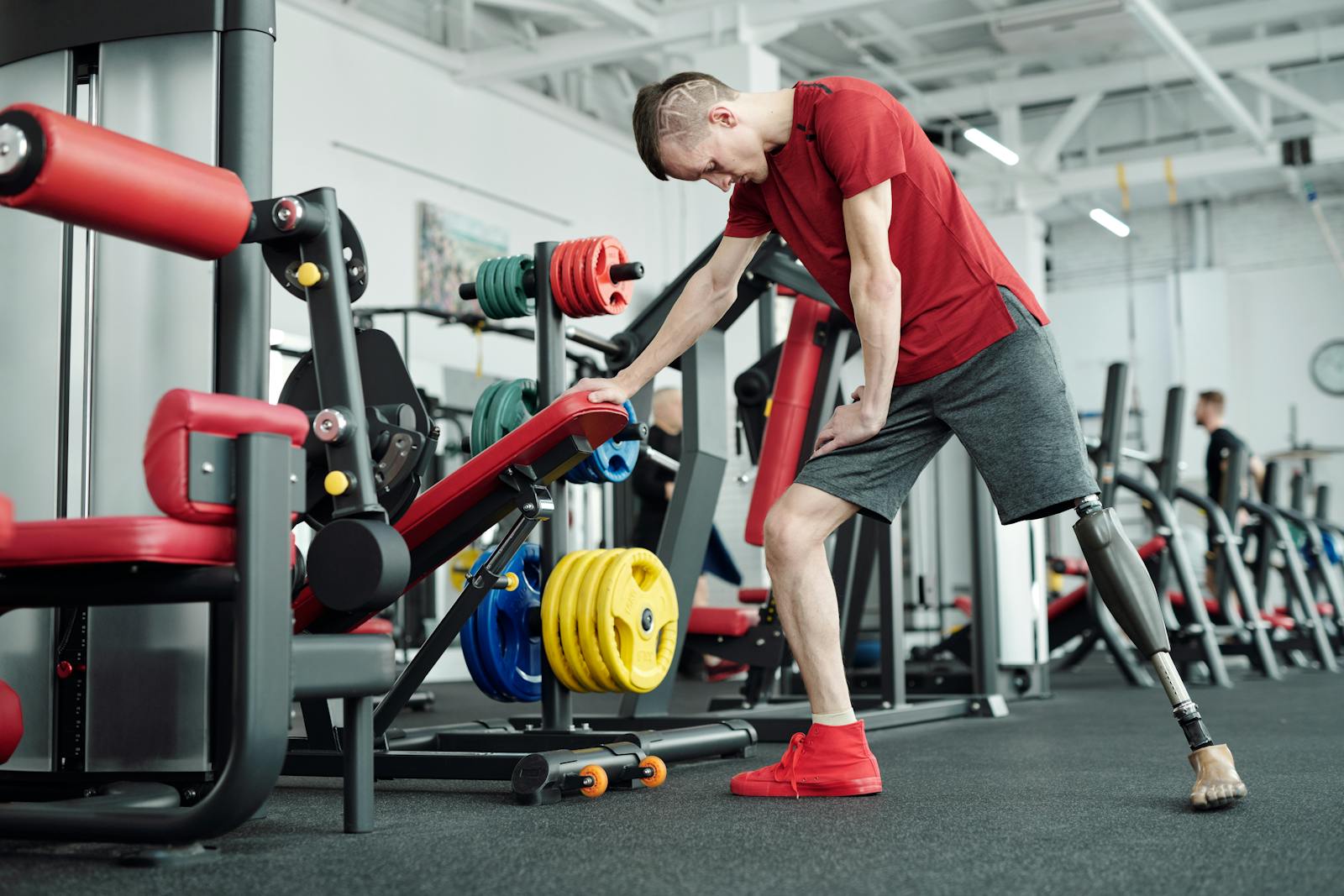
Creating a home gym can be an exciting venture, but it’s essential to set a budget before diving into purchasing exercise equipment. Like any investment, establishing a budget will help you make informed decisions, prioritize essential items, and avoid overspending. Whether you’re working with a limited budget or have the flexibility to invest more, here are several reasons why setting a budget for your home gym is a crucial step in achieving your fitness goals:
7.1 Define Your Spending Limits
Setting a budget provides clear spending limits for your home gym project. It helps you understand the maximum amount you are willing to invest in exercise equipment and any additional accessories or improvements for your fitness space. Defining these limits early on will guide your purchasing decisions, ensuring that you stay within your financial means.
7.2 Prioritize Essential Equipment
Having a budget allows you to prioritize the most essential equipment for your fitness goals. Rather than purchasing numerous items that may not be crucial to your routine, you can focus on investing in high-quality pieces that align with your specific needs and preferences. For example, if strength training is your priority, allocating more of your budget to weights and resistance equipment would make sense.
7.3 Consider Quality and Longevity
A budget helps you strike a balance between cost and quality. While it may be tempting to opt for cheaper equipment to save money, compromising on quality can lead to a shorter lifespan and potential safety issues. By setting a budget, you can allocate funds for high-quality equipment that will last longer and provide a better performance, ensuring a safer and more satisfying workout experience.
7.4 Research and Compare Prices
Establishing a budget allows you to conduct thorough research and compare prices across different brands and retailers. Price comparisons help you find the best deals and discounts, maximizing the value of your budget. Keep in mind that some reputable brands may offer financing options or special promotions, making it more feasible to acquire higher-quality equipment within your budget.
7.5 Plan for Additional Costs
In addition to exercise equipment, your budget should account for any extra costs related to setting up your home gym. These costs may include gym flooring, mirrors, storage solutions, fans, or sound systems. Planning for these additional expenses ensures that you have a comprehensive view of the total investment required for your home gym project.
7.6 Allow for Future Upgrades
A well-planned budget leaves room for future upgrades or additions to your home gym. As you progress in your fitness journey and your needs change, you might want to expand or enhance your exercise options. Allowing for future upgrades in your budget gives you the flexibility to adapt your home gym to your evolving fitness goals without financial strain.
7.7 Financial Peace of Mind
Setting a budget provides financial peace of mind throughout the process of creating your home gym. You can confidently make informed decisions, knowing that you are sticking to your predetermined spending limits and investing in equipment that aligns with your fitness goals. Avoiding overspending or unexpected financial stress allows you to fully enjoy and focus on your fitness journey.
Conclusion
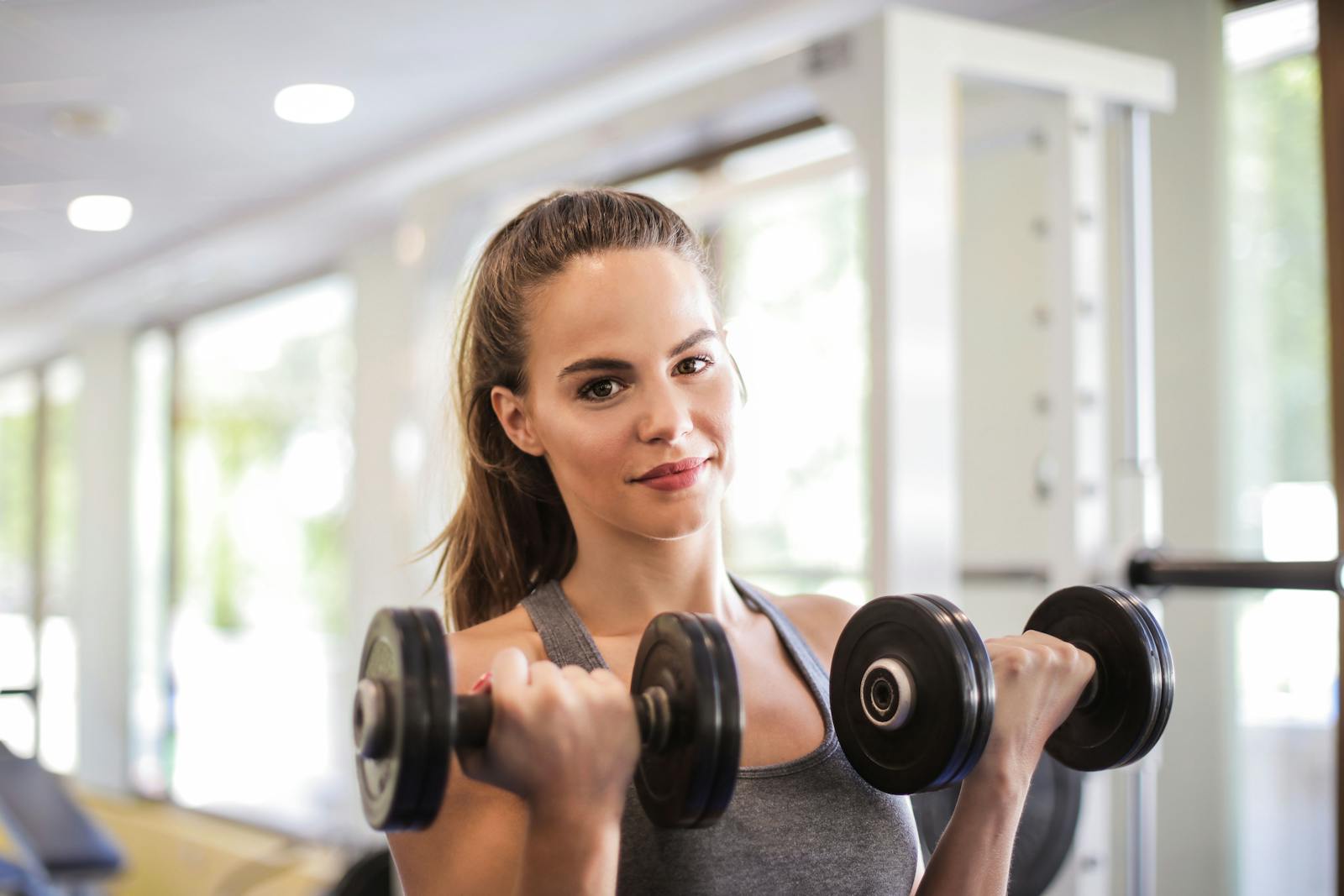
Choosing the right exercise equipment for your fitness goals is a critical step in creating an effective and enjoyable workout routine. The first and most crucial step is to define your fitness objectives clearly. Are you aiming to lose weight, build muscle, improve cardiovascular endurance, or enhance flexibility? Identifying your goals will help you narrow down your options and select the equipment that aligns with your specific needs. For instance, if your primary focus is strength training and muscle building, investing in resistance training equipment like dumbbells, barbells, and resistance bands should be a priority. On the other hand, if you’re looking to improve cardiovascular health, considering a treadmill, stationary bike, or rowing machine would be more suitable.
In addition to defining your fitness goals, consider the available space in your home for setting up your home gym. Measuring the area where you plan to exercise will ensure that you choose equipment that fits comfortably without overcrowding the space. For smaller spaces, opt for compact and versatile equipment that can be easily stored when not in use. Wall-mounted equipment like pull-up bars and suspension trainers can be excellent space-saving options. Alternatively, if you have a spacious room, you may have the luxury to include larger equipment like a power rack or a multi-gym setup.
Another essential factor is to invest in high-quality equipment. While it may be tempting to go for cheaper alternatives, investing in durable and reliable equipment pays off in the long run. Quality exercise equipment ensures safety, longevity, and a better overall workout experience. Cheaper equipment may lead to injuries or malfunctions, hindering your progress and motivation. Look for reputable brands known for their excellent craftsmanship and performance. Consider multi-functional equipment that allows you to target multiple muscle groups and perform various exercises, maximizing the value of your investment. By carefully considering your fitness goals, and available space, and investing in quality equipment, you’ll create a home gym that empowers you to achieve your fitness dreams and embrace a healthier and more active lifestyle.



